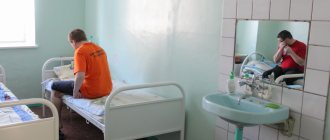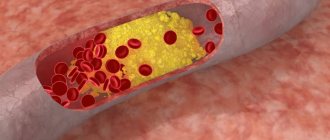Heroin is a heavy semi-synthetic drug based on opium. It is highly addictive even after 2-3 times of use. If a drug addict suddenly stops taking a psychostimulant of this type, he develops withdrawal symptoms, accompanied by severe physical and mental pain, hallucinations, and a state of panic.
The NarMed drug treatment clinic offers inpatient and at-home treatment. Modern medical technologies make it possible to quickly relieve withdrawal symptoms and alleviate the patient’s condition. To use the help of professional narcologists, call and tell us about your problem.
You can get tested at the NarMed drug treatment clinic . Pre-registration and consultation by phone +7 (495) 648-66-16
Prices for tests at the NarMed drug treatment center
Calling a narcologist to your home (patient history, prescribing a course of treatment)
from 3000 rubles
Detoxification of the body, standard ward (price excluding additional procedures, price includes: accommodation, meals, supervision by a narcologist, droppers as prescribed)
from 2900₽/day
Detoxification of the body, VIP ward (price excluding additional procedures, price includes: accommodation in a single room, meals, supervision of a narcologist, droppers as prescribed)
from 7900₽/day
Heroin withdrawal syndrome in drug addicts
Heroin has a pronounced narcotic effect. Due to the rapid formation of addiction, almost every heroin addict is familiar with the withdrawal symptoms that inevitably occur when the next dose of the drug is delayed.
What it is
The reasons why withdrawal occurs are quite simple: heroin is integrated into a person’s metabolism, and his body stops producing endorphins, which are similar in structure to opiates. In the absence of the next dose, a disruption occurs in the functioning of the nervous system, which is accompanied, to put it mildly, by unpleasant physiological manifestations.
How does heroin withdrawal work?
The painful symptoms of heroin withdrawal can be divided into four stages. There is no specific boundary between them - they smoothly follow each other:
- Begins 8-12 hours after consumption. Experienced drug addicts sense changes in the functioning of the physiological mechanism in advance. Restlessness and anxiety increase, appetite and sleep disappear. A runny nose appears, sneezing, and pupils dilate. The body becomes covered with “goose bumps”, the person feels weak and chills, turning into fever.
- The next day the symptoms intensify - the second stage begins, more acute. The sneezing develops into attacks, the chills do not go away, and drooling appears. My neck, back and legs hurt a lot, and I get cramps.
- A day later, the symptoms include stool upset, vomiting, abdominal pain, and fever increases. There is no sleep, but the addict periodically falls into unconsciousness. The skin becomes dry and takes on an earthy tint.
- Starting from the third day, the final stage begins to count down. Depending on the individual characteristics of the body, its duration varies from 5 to 15 days, after which the symptoms subside.
When does severe withdrawal begin?
Narcologists have thoroughly studied how heroin addicts “break”—severe abstinence will not be long in coming. Not getting what you want, on the third day of quitting the drug, the increase in painful symptoms reaches a critical level. The person shudders, his gaze becomes distant. Observed:
- General malaise.
- Convulsive states.
- Heat.
- Symptoms of an acute eating disorder, accompanied by vomiting and diarrhea.
- Dehydration and severe weakness.
Physiological manifestations in a heroin addict are accompanied by a fall into unconsciousness; periods of vigor are uncontrollably replaced by short periods of anxious sleep.
Leave a request for a free consultation with a specialist
we will contact you as soon as possible
- Anonymously
- For free
- Around the clock
Submit your application
Or call: +7 (495) 127-02-03
Rehabilitation
The time when a person does not use drugs is called remission. There is an opinion that people who have used the drug at least once always remember its effect. This memory can force them to start using again at any moment.
The task of rehabilitation therapists is to change the patient’s social and personal identity. It is important to change beliefs about drugs, instill new values to restore its stigmatization in society.
In addition to psychological work, heroin addicts require intensive pharmacological support. If rehabilitation is not carried out comprehensively, there will be no result.
What does the rehabilitation course include:
- assistance in eliminating withdrawal symptoms (it will happen in any case);
- psychological support throughout the treatment and after it;
- working with codependent people, friends and family members;
- limiting contact with people who actively use;
- maintaining physical and mental activity;
- constant search for interests, mastering new skills or professions;
- use of replacement therapy and other pharmacological agents if necessary.
Before starting the active rehabilitation process, heroin addicts undergo special therapy to “cleanse” the body of the drug. Then, with the help of sleep or painkillers, they are helped to survive withdrawal.
There is no correlation between whether a person will use again or not if he experiences withdrawal without additional pharmacological support. Therefore, it is better to relieve the patient’s pain and allow him to endure the critical period without another breakdown.
Be careful, as the patient will try, under any pretext, to find a way to use again. He is capable of deception or even the use of brute physical force, which is why rehabilitation should take place in special medical institutions.
Get help now
Do any of your relatives or friends have an addiction? Have you tried in every possible way to help, but as a result the person still returned to his past life?
You are not the first to encounter this problem, and we can help you.
We guarantee anonymity, we will persuade you to undergo treatment, and we will help you choose a center.
Call us
+7
or
Call me
Symptoms of withdrawal in a drug addict
Symptoms associated with heroin withdrawal include the following:
- Emotional instability.
- The skin takes on an earthy tint, and the facial expression is mask-like.
- Dark circles under the eyes.
- Dyspnea.
- Sweating with an unpleasant odor.
- Sleep disorders.
- Dyspepsia, gastrointestinal disorders.
- Muscle weakness, dizziness.
- Aching joints and muscles throughout the body, pain in the head area.
The withdrawal state becomes so intense that the addict can not only walk or sit, but also lie down.
How do drug addicts feel - their internal state?
Metabolic disorders cause vivid psycho-emotional experiences. A person is literally obsessed with drug addiction. Unsuccessful attempts to avoid drug withdrawal lead a person into an aggressive and embittered state, in which he is easily capable of causing harm not only to himself, but also to others. Periods of active resistance are replaced by complete indifference.
Being in a desperate situation after unsuccessful attempts to get the drug, and feeling increasing physical pain, the addict, out of hopelessness, plunges into boundless fear. A person experiencing withdrawal experiences severe physical and emotional discomfort, which seriously affects the psyche. A heroin addict's intellect is destroyed, the pain threshold decreases, but only one thing remains unchanged - the attraction to the drug. Experienced drug addicts constantly experience withdrawal, their tolerance to the drug increases, and they no longer experience pleasure from taking the substance. The addict uses to feel normal.
How do the first signs appear?
As soon as the addict does not receive the next dose, internal processes completely or partially stop. The body is trying to get things working, but it takes time. All receptors disabled by opiates open, and a condition called withdrawal begins. The first signs appear 8-10 hours after taking the drug. The drug addict develops a cough, runny nose and sneezing, and his pupils dilate. Tears flow involuntarily, the body becomes covered with goose bumps. A person cannot fall asleep, becomes irritable and tense, and his movements become sharp and jerky.
Predictions and consequences
Withdrawal does not have a destructive effect on the body; the danger comes from the consequences of taking narcotic substances. A person stops eating, so weakening occurs, he sweats a lot, which entails dehydration. This is only a small part of the problems, because often, against the background of withdrawal, problems develop with the organs of the respiratory system, heart and blood vessels. Insomnia and aggression develop, so an addicted person can harm both himself and those around him. The risk of heart attack and stroke increases - all this is dangerous and requires immediate medical intervention.
How long does heroin withdrawal last for an addict?
The development of drug withdrawal is painful for a person. After the acute phase, the addict remains with a strong craving for the drug. After detoxification in the clinic, the attraction will remain - comprehensive rehabilitation is needed. Subacute withdrawal syndrome can last up to six months, and the fragmented phase of addiction lasts about 3 years.
Without recovery treatment, another drug use inevitably occurs, and everything starts all over again. Therefore, to treat drug addiction, an integrated approach and long-term recovery are required, from 6 months to 1 year. The body of a drug addict does not have time to recover in 2 weeks - 1 month. He needs to learn to overcome cravings, restore his psyche, and change his thinking. When a patient ignores doctors' recommendations, a relapse occurs. The next withdrawal becomes even more unpleasant and severe, the addiction progresses.
Resocialization
The key task of resocialization is the resumption of social connections that were lost during the period of drug addiction. Returning to society implies the formation of a new social circle that will not encourage drug use. To return an addict to normal life, it is necessary to undergo a rehabilitation course aimed at:
- formation of new habits;
- awareness of one’s condition and unwillingness to return to it;
- establishing communication with family;
- development of useful skills;
- establishing an active life position;
- searching for interesting activities;
- resumption of work.
Resocialization allows a person to live a new full life by giving up taking Heroin. However, as at all stages, support is needed that will motivate a person to look for something new and interesting for himself, without returning to taking drugs.
After a course of restorative treatment, patients return to a healthy life, armed with effective methods of coping with difficulties, stress and pathological temptations. They successfully find work, restore friendships, and build families. Their life returns to a measured course, where there is no place for drugs.
Coming off heroin – what next?
Despite the extremely severe course of the withdrawal syndrome, drug withdrawal, having reached its peak, slowly reduces the intensity of pain. The “retreat” begins. The process of restoration of the physiological mechanism of opiate metabolism after heroin is slow. At the same time, the psychological dependence remains, and attempts to find the next dose are renewed with renewed vigor.
Suffered withdrawal causes serious damage to internal organs and systems; a person, if he survives, becomes even weaker and susceptible to infections and other diseases. Having found a dose, the addict closes the circle, and everything repeats again. Sooner or later he will die from an overdose or chronic diseases. Only professional drug treatment assistance and the participation of loved ones can save a person.
Working with codependents
Codependency is a pathological state of complete psychological or physical dependence on another person.
Drug addiction affects not only addicts, but also those around them. Relatives, having learned about the difficult situation of the drug addict, are trying with all their might to help him. Psychological support is an integral factor in the successful rehabilitation of drug addicts, but living in such a state causes irreparable harm to the psyche.
To cope with codependency, you need to consult a specialist. Working with a psychologist will help you understand the state of the drug addict, realize that it is possible to provide all possible help, resolve disputes that have arisen, and cope with the state of hopelessness.
A friendly atmosphere during drug addiction treatment promotes faster socialization. Being in conditions that are comfortable for everyone, loved ones feel better.
Removing withdrawal symptoms
7,000 pcs.
- Dropper volume 1500 ml
- Visit of a narcologist
- Patient examination
- Consultation with a narcologist
- Sedatives and metabolic agents
- Saline solution
- Amino acids and hepatoprotectors
- Vitamin complex
Order service
What to do during an acute period
Relatives should hospitalize the drug addict in the hospital or call a narcologist at home to minimize the consequences of withdrawal. Under no circumstances should you give money for drugs. On an emergency call, a private clinic doctor arrives faster than an emergency room and immediately carries out the necessary procedures.
The doctor has with him all the necessary drugs and materials to relieve acute conditions. A doctor will help you overcome heroin withdrawal with minimal health consequences. However, it will not be possible to get rid of addiction at home, and the situation will quickly repeat itself. A drug addict needs comprehensive treatment and subsequent recovery. Such help can only be obtained in a specialized center for drug addicts.
Treatment at the clinic's inpatient facility
If a person has developed withdrawal from heroin addiction, only a narcologist can answer how to get rid of this condition. Professional withdrawal from a serious condition is carried out using special medications that improve physical condition and accelerate the process of removing drug residues from the body. Tranquilizers are prescribed to relieve pain and convulsive symptoms. In order to normalize the mental state, a short course of antidepressants can be prescribed, as well as amino acids that have a beneficial effect on the activity of the central nervous system.
In addition, cardioprotectors, hepatoprotectors, hormonal agents, psychostimulants, and multivitamin complexes are prescribed as part of maintenance therapy.
An important aspect of treatment is detoxification, which includes infusion therapy, hemodialysis, enterosorbents, and gastric lavage.
How to quit on your own
To quit on your own you must have strong motivation. It is very difficult to survive withdrawal without outside help, even due to the fact that the patient will not be able to drink water or eat. In such cases, you need to stock up on food and water for 7-14 days.
If there is even one opportunity to take a drug to get rid of withdrawal symptoms, 90% of drug addicts will succumb to temptation.
The patient must know exactly what he will do after he overcomes the addiction. If he does not engage himself in mental or physical activity after withdrawal, the chances of another breakdown will remain high.
And one of the most important conditions is to get rid of all contacts with people who use any drugs. They are triggers that make you use heroin again.
Literature:
- Drug and alcohol addiction: a practical guide to the rehabilitation of children and adolescents / S. B. Vaisov. - St. Petersburg: Science and Technology, 2008. - 268 p.
- Adolescent narcology: a guide for doctors / I. N. Pyatnitskaya, N. G, Naydenova. — Moscow: Med. information agency, 2008. – 251 p.
- Clinical and socio-psychological foundations for the prevention of addiction to psychoactive substances in minors / A. V. Khudyakov; State higher educational institution prof. education "Ivanovo State honey. acad. Federal Agency for Health and Social Development." — [Ed. 2nd, additional]. - Ivanovo, 2007. - 252 p.
Need some advice?
OR CALL A DOCTOR
CALL!
+7










